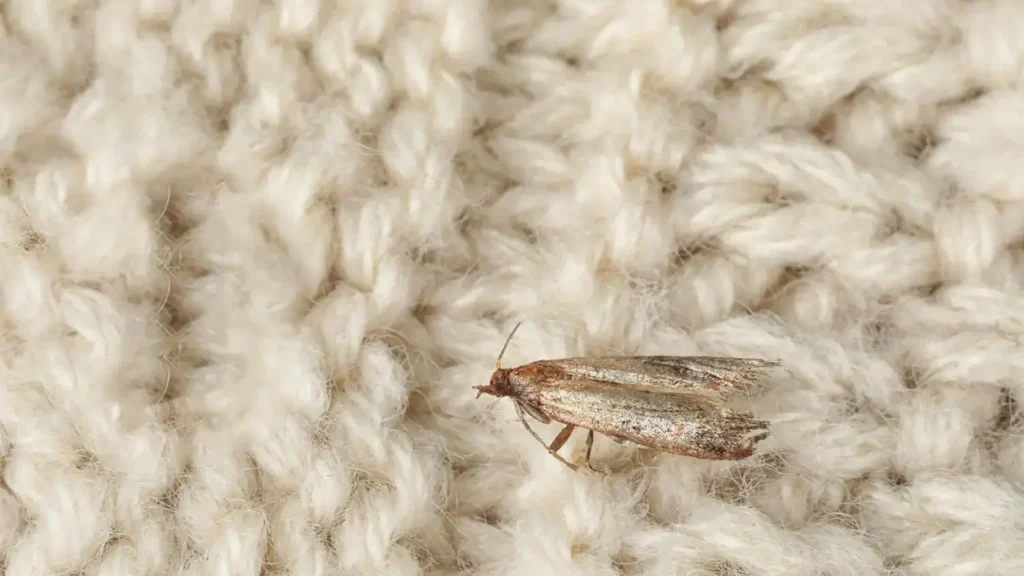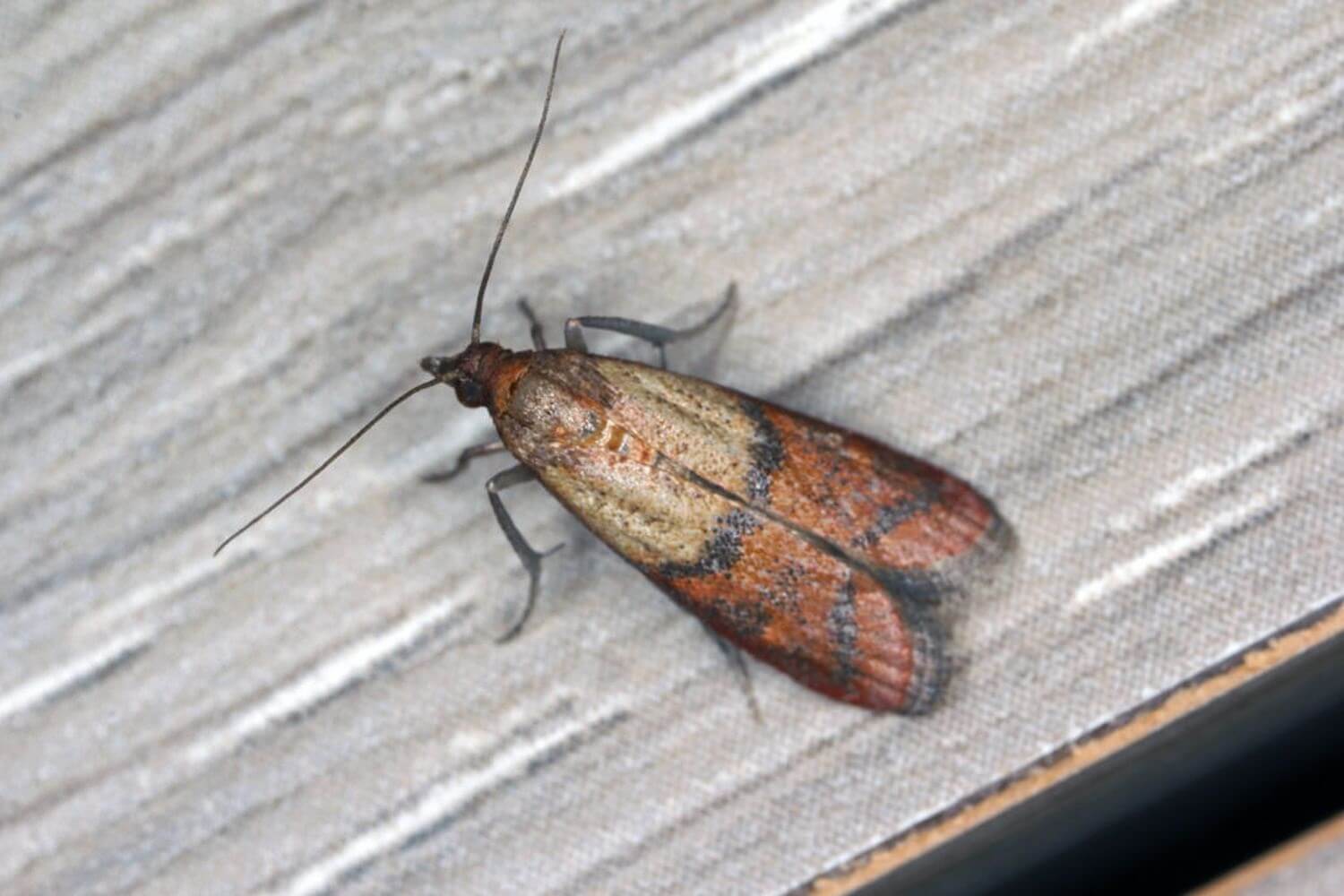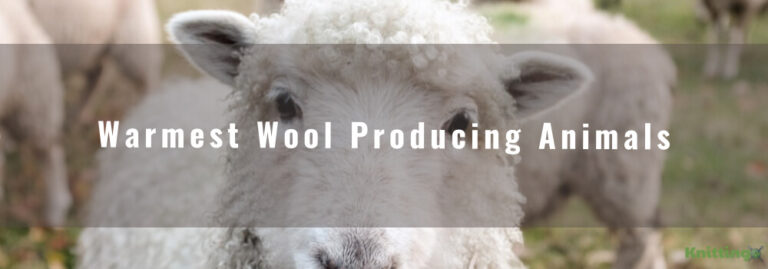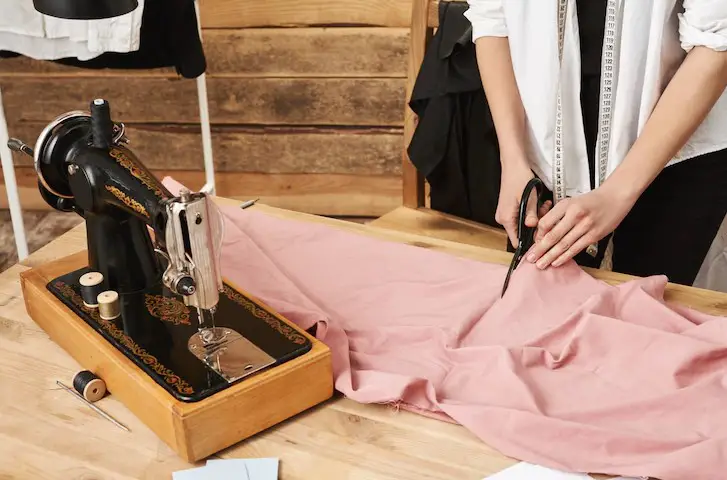Pantry moths, also known as Indian meal moths, are primarily attracted to stored food products such as grains, cereals, nuts, and dried fruits. They are not known to eat wool. However, it’s important to note that pantry moths can infest areas near the pantry, including closets, where they may come into contact with woolen clothing or fabrics. While pantry moths do not actively feed on wool, they may lay eggs on woolen items if given the opportunity.
Overview of pantry moths
Pantry moths, also known as Indian meal moths or pantry pests, are common household pests that infest stored food products. These small moths belong to the species Plodia interpunctella. While they primarily target grains, cereals, nuts, and dried fruits, they can also infest other food items found in pantries or kitchen cabinets. Pantry moths are attracted to light and are often noticed flying near infested food or resting on walls and ceilings.
Their larvae, commonly referred to as “worms,” are creamy white and feed on the food products, leaving behind webbing and droppings. Infestations can occur when contaminated products are brought into the home or when food is left unsealed or improperly stored. Proper sanitation, regular inspection, and storing food in airtight containers are crucial for preventing and eliminating pantry moth infestations.
Physical characteristics and life cycle of pantry moths
Pantry moths, scientifically known as Plodia interpunctella, have distinct physical characteristics and undergo a specific life cycle. Here are the details:
Physical Characteristics:
Pantry moths are small insects with a wingspan of about 0.5 to 0.75 inches (1.2 to 2 cm). They have a distinctive appearance, featuring a mottled pattern of gray, copper, and reddish-brown colors on their wings. When at rest, their wings fold flat over their bodies. Adult pantry moths have long, thread-like antennae and elongated mouthparts, but they do not feed on food products.
Life Cycle:
- Egg Stage: Female pantry moths lay tiny, white eggs directly on food surfaces or in crevices near stored food items. Each female can lay up to 400 eggs over her lifespan.
- Larval Stage: The eggs hatch into larvae, commonly known as “worms” or caterpillars. Pantry moth larvae are off-white in color with a brown head. They are about 0.4 inches (1 cm) long when fully grown. Larvae feed on stored food products, creating silken webbing and leaving behind excrement.
- Pupal Stage: Once the larvae have fully grown and consumed enough food, they spin cocoons and enter the pupal stage. Pupae are usually brown or reddish-brown and are found in cracks, crevices, or food packaging.
- Adult Stage: After a pupal period of about 10 to 14 days, adult moths emerge from the cocoons. They have fully developed wings and are ready to mate and continue the life cycle. Adult pantry moths do not live long, typically surviving for about 1 to 2 weeks.
The life cycle of pantry moths can range from a few weeks to several months, depending on factors such as temperature and food availability. Understanding this life cycle is crucial for effective pest control and prevention strategies, which include proper food storage, regular inspection, and elimination of infested items.
Pantry Moths and Wool: Myth or Reality?

The idea that pantry moths eat wool is a common misconception. Pantry moths, scientifically known as Plodia interpunctella, primarily infest stored food products such as grains, cereals, nuts, and dried fruits. They do not have a natural inclination to consume or feed on woolen materials.
However, it’s important to note that pantry moths can occasionally come into contact with woolen clothing or fabrics. They may be attracted to the vicinity of the pantry or infested food and inadvertently lay their eggs on nearby surfaces, including wool. The hatched larvae, commonly referred to as “worms,” will then seek out food sources, but they are unlikely to actively consume or damage wool fibers.
To protect woolen items from pantry moths, it’s crucial to practice proper storage and cleanliness. Ensure that food products are stored in sealed containers and regularly inspect woolen garments for signs of infestation. If pantry moths are present in the vicinity, taking preventive measures such as using moth repellents or traps can help safeguard woolen materials.
What Pantry Moths Actually Eat
Pantry moths, scientifically known as Plodia interpunctella, primarily feed on a variety of stored food products commonly found in pantries or kitchen cabinets. These pests have a particular affinity for dry goods and can infest a wide range of items, including:
- Grains: Pantry moths target various grains such as rice, wheat, oats, barley, and corn.
- Cereals: They infest ready-to-eat cereals, including flakes, puffs, granola, and oatmeal.
- Nuts and Seeds: Pantry moths can damage almonds, walnuts, pistachios, sunflower seeds, and other similar items.
- Dried Fruits: They are attracted to dried fruits like raisins, dates, figs, apricots, and prunes.
- Baking Ingredients: Pantry moths can infest baking supplies such as flour, cake mixes, bread crumbs, and baking soda.
- Pet Food: They can target dry pet food, including dog kibble and cat kibble.
It’s important to note that pantry moths are opportunistic and can infest a wide range of food items. They are attracted to products that are improperly sealed or stored, providing them easy access to lay eggs and reproduce. To prevent pantry moth infestations, it’s essential to store food in airtight containers, regularly inspect items for signs of contamination, and promptly discard any infested products.
Understanding Pantry Moth Infestation in Wool
Pantry moth infestation in wool is a possible scenario, although it is relatively uncommon. Pantry moths, also known as Indian meal moths (Plodia interpunctella), primarily target stored food products such as grains, cereals, and dried fruits. However, pantry moths can inadvertently infest woolen materials if they are present in the vicinity of the pantry or infested food.
- When pantry moths lay their eggs, they can scatter them in the surroundings, including areas near woolen garments or fabrics. If the eggs are deposited on wool, the hatched larvae may explore the material in search of suitable food sources. However, pantry moth larvae typically prefer and thrive on food items rather than wool fibers.
- To prevent pantry moth infestations in woolen materials, it is important to maintain proper storage and cleanliness. Store woolen items in sealed containers or bags, regularly inspect them for signs of infestation (such as webbing or larvae), and keep them in a clean, dry environment. Using moth repellents or traps near woolen items can also provide an additional layer of protection.
Conclusion
In conclusion, pantry moths, scientifically known as Plodia interpunctella, are primarily attracted to stored food products and are not known to have a natural inclination to eat wool. While pantry moth infestation in wool is possible, it is relatively rare. Pantry moths can inadvertently lay eggs on woolen materials if they are present in the vicinity of infested food or pantry areas.
References:
https://drkilligans.com/blogs/insects/can-pantry-moths-eat-my-clothing
https://www.thespruce.com/how-to-get-rid-of-pantry-moths-1389063







